I’m often asked by fellow colleagues in the broadcasting industry for my thoughts on what makes an effective programming clock. I usually offer my feedback and go over strategies that I feel confident in but truth be told, there really is no magical clock that is going to help a station deliver ratings. Are there certain games to play in the ratings game to give your brand an advantage? Absolutely. But let’s not lose sight of what really makes an audience respond, great content from great talent.
Recently I had a discussion with someone who does research about the differences in setting up an hourly clock. When I explained how I have some shows operate with a 4-break per hour system and some manage with a 3-break per hour system, I was asked immediately if I’d consider changing my setup to reflect a 3-breaks per hour system on all shows. I wasn’t asked who the shows were hosted by, when the breaks were happening or how long each break was, instead it was the typical analysis “less commercial breaks means better ratings”.
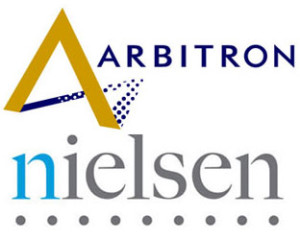 Too many times I have heard the same exact thing “Nielsen (much like Arbitron) highly recommends to take as few breaks as possible“. I’ve heard this in multiple markets, various sports radio conferences and I do believe that there’s some merit to it however what researchers don’t take into account during these conversations are how it actually works on the programming end. You can play math equations all day long if you want but listeners (even those with meters) don’t listen based on quarter hour measurements and there’s much more to keeping people interested in consuming your product than just eliminating commercials.
Too many times I have heard the same exact thing “Nielsen (much like Arbitron) highly recommends to take as few breaks as possible“. I’ve heard this in multiple markets, various sports radio conferences and I do believe that there’s some merit to it however what researchers don’t take into account during these conversations are how it actually works on the programming end. You can play math equations all day long if you want but listeners (even those with meters) don’t listen based on quarter hour measurements and there’s much more to keeping people interested in consuming your product than just eliminating commercials.
I can argue that a show has much better pace, energy and stronger focus on delivering content inside of a 10-minute window than it does when offering up a 20-25 minute segment. Listen around the country to numerous talk shows on various stations who deliver longer segments and find me the program that is consistently fast paced, energetic, content rich and moving from Point A to Point B to Point C inside of a 20-25 minute window. It doesn’t happen often.
 Why might you ask? Because when hosts are delivering content for that length of time, most lose focus and ramble. They don’t view their 20-25 minute segment as a combination of four 5-minute segments and they don’t stay aware of timing. Usually phone calls flood the segment or a guest who’s great for 5-6 minutes gets stretched out to 10-15 minutes and it becomes more about filling time than maximizing content time.
Why might you ask? Because when hosts are delivering content for that length of time, most lose focus and ramble. They don’t view their 20-25 minute segment as a combination of four 5-minute segments and they don’t stay aware of timing. Usually phone calls flood the segment or a guest who’s great for 5-6 minutes gets stretched out to 10-15 minutes and it becomes more about filling time than maximizing content time.
I like to look at a 20-25 minute segment as an opportunity to deliver four to five mini-segments. When you approach it that way, you continue moving forward with good momentum. In a perfect world, your host is coming out of the gate with strong opinions on the most popular local topic for anywhere between 5-10 minutes. If it’s well crafted, it’ll be a captivating 10-minute ride. If not, 5-minutes can still be accomplished and if it’s emotionally charged from your host, the audience should respond by wanting to engage in discussion on it.
After the opinion and supporting facts are offered, you have the option to either include a guest who can add further insight and/or opinion on the story or you can utilize the audience to weigh in on the topic too. There’s also the possibility of adding sound, a feature or production to paint the story. Having different ways to make the story sound fresh and interesting is important.
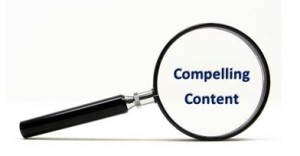 If you deliver 5-10 minutes of opinion, 5-10 minutes of a guest and 5-minutes of audience reaction, you’ve now presented three different ways to keep that one particular topic interesting. That’s how a 20-25 minute segment stays compelling. It takes multiple layers, multiple voices, multiple sounds and multiple twists and turns inside the content to keep it interesting to the audience.
If you deliver 5-10 minutes of opinion, 5-10 minutes of a guest and 5-minutes of audience reaction, you’ve now presented three different ways to keep that one particular topic interesting. That’s how a 20-25 minute segment stays compelling. It takes multiple layers, multiple voices, multiple sounds and multiple twists and turns inside the content to keep it interesting to the audience.
Search the country and find any show that has longer content segments and see if you remember how the segment started and whether or not you could stay mentally excited and engaged in the content for longer than 5 minutes. Remember, Nielsen ratings are about securing 5-minutes of listening inside each quarter hour and if you’re going to offer 20-25 minutes of straight content with no focused destination, people’s attention spans will become smaller and they will tune you out faster.
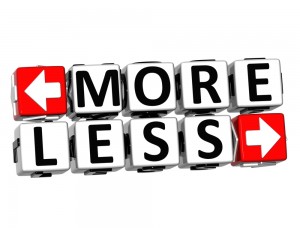 I bring up this example for a reason. If you take fewer breaks per hour inside of a show, you’re going to end up with at least one real long stretch of content at some point and I find that most shows and hosts don’t own those opportunities as much as those who perform shorter segments. While someone from Nielsen or a research company can suggest breaking as little as possible, they don’t take into account who your talent is, how you strategically match up against your in-market competitor and if your station’s style of content is geared for longer or shorter stretches.
I bring up this example for a reason. If you take fewer breaks per hour inside of a show, you’re going to end up with at least one real long stretch of content at some point and I find that most shows and hosts don’t own those opportunities as much as those who perform shorter segments. While someone from Nielsen or a research company can suggest breaking as little as possible, they don’t take into account who your talent is, how you strategically match up against your in-market competitor and if your station’s style of content is geared for longer or shorter stretches.
For stations on FM, one of the reasons why radio operators starting moving to the frequency is to attract younger people and build tomorrow’s way of doing sports radio. Do younger people listen for 30 minutes straight to content or do they like faster impressions that they can digest in 5-10 minutes? You know as well as I do, they want it quickly and they’re not staying with you for long periods of time. They are more likely to tune in 5-6 times per show than they are to give you 2 straight quarter hours of listening time.
As it applies to breaks, based on Nielsen’s recommendations, your ratings should go thru the roof if you only break 1x per hour since after all, it’s mostly about eliminating interruptions. As I once told a former host at one of my previous stations, unless your name is Chris Rock, I don’t want to hear you talk for 30-40 minutes straight without a break. Here’s why, most people can’t be highly entertaining consistently for 30-40 minutes straight.
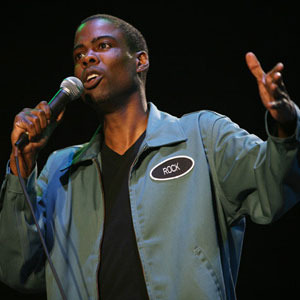 Remember this too, when Chris Rock does a standup show, he’s got his act in place to entertain for 60-minutes. He knows the start, the middle and the end of his routine. But what if he was doing a radio show? Could he do that for 3-4 hours per day? Maybe he could but I think you’d find more holes in the presentation.
Remember this too, when Chris Rock does a standup show, he’s got his act in place to entertain for 60-minutes. He knows the start, the middle and the end of his routine. But what if he was doing a radio show? Could he do that for 3-4 hours per day? Maybe he could but I think you’d find more holes in the presentation.
On the other hand, give a host 10-12 minutes and ask them to stay crisp, focused and in control of the pace and it absolutely can be done. When a researcher explains to me how 3-breaks per hour is better than 4-breaks, I remind him that my station’s best ratings are during the two shows that deliver 4-breaks, not the ones that do 3-breaks. Does that mean they wouldn’t be successful going with 3-breaks? No. But when people are good at certain styles of execution and the audience is responding to the way it’s laid out, isn’t that what’s supposed to matter?
 In the grand scheme of things, some hosts can be great for 5-minutes, some for 10, some for 15 and even a select few for 20-25. You can give them 2 commercial breaks, 3 commercial breaks or 4-5 commercial breaks and some shows will stand out and perform strongly and others won’t. It still comes down to talent, selecting the right content, delivering it in an entertaining way and making sure the momentum keeps going forward and the pace feels fast.
In the grand scheme of things, some hosts can be great for 5-minutes, some for 10, some for 15 and even a select few for 20-25. You can give them 2 commercial breaks, 3 commercial breaks or 4-5 commercial breaks and some shows will stand out and perform strongly and others won’t. It still comes down to talent, selecting the right content, delivering it in an entertaining way and making sure the momentum keeps going forward and the pace feels fast.
I’m not going to suggest that Nielsen’s ideas of breaking less don’t make sense. They do. In a perfect world we’d take 1-2 breaks and have talent execute amazing content for 20-30 minutes straight every time but the reality is that it’s not as easy as some may think. To be outstanding for that period of time is difficult and I want personalities on the air making sure that every minute they spend talking is leading somewhere, not just filling up air space to avoid an extra break.
The other part not being considered is the business side of the operation. Face it, we’re in the business of selling ad time, content association and branding partnerships. Like it or not, commercials are going to be a part of our system. We can try to limit break times and unit counts all we want but our business requires buy in from advertisers too. You sit there and tell a client who wants to spend six figures on your radio station that you’re not going to sell them a fifteen second commercial because you only want sixty second spots since you’re trying to keep unit counts low.
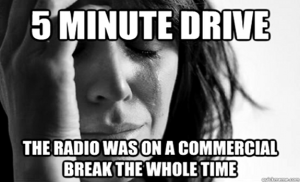 Here’s the deal, I’ve gained great ratings in my career with shows that have taken breaks 4-5x per hour and I’ve gained the same from shows who have broken 3x per hour. The bottom line, there’s no perfect way to do it and commercials need to be in place to assure that we have a profitable business. All you can do is focus on maximizing your content time while making your interruptions as short as possible. Under both scenarios, the companies I worked for made money.
Here’s the deal, I’ve gained great ratings in my career with shows that have taken breaks 4-5x per hour and I’ve gained the same from shows who have broken 3x per hour. The bottom line, there’s no perfect way to do it and commercials need to be in place to assure that we have a profitable business. All you can do is focus on maximizing your content time while making your interruptions as short as possible. Under both scenarios, the companies I worked for made money.
When I program a 4-break per hour clock I try to keep breaks to 3 minutes or less so our shows have a chance to deliver 11-12 minutes for content inside of a 15-minute window. If I’m going with a 3-breaks per hour system, we’re likely going to run 4-4:30 of ads so we fulfill our business obligations and still give our talent a chance to spend 45-48 minutes per hour delivering content. I believe in delivering a content rich experience and don’t want hours cluttered with a plethora of ads and pointless benchmarks which encourage listeners to leave. Striking a happy balance though is the key.
 If quarter hours are :00-:15, :15-:30, :30-:45 and :45-60 and you need 5-minutes of listening spent in those windows, your goal as a PD, Host and Producer is to play the percentages and try to offer as much content time as possible. That doesn’t mean you’ll get ratings credit, it just means you’re giving yourself the best chance to gain credit.
If quarter hours are :00-:15, :15-:30, :30-:45 and :45-60 and you need 5-minutes of listening spent in those windows, your goal as a PD, Host and Producer is to play the percentages and try to offer as much content time as possible. That doesn’t mean you’ll get ratings credit, it just means you’re giving yourself the best chance to gain credit.
All of this comes down to one thing – content! If the personality is not informative and entertaining and talking about the topics with the broadest appeal to the local audience, then I don’t care if you’ve done 60-minutes straight with no interruptions. People only listen to stations and hosts that mentally distract them or emotionally excite or frustrate them. If the content isn’t great, neither will be your ratings. It doesn’t take a whole lot of research to figure that out.

Jason Barrett is the Founder and CEO of Barrett Media. The company launched in September 2015 and has provided consulting services to America’s top audio and video brands, while simultaneously covering the media industry at BarrettMedia.com, becoming a daily destination for media professionals. Prior to Barrett Media, Jason built and programmed 95.7 The Game in San Francisco, and 101 ESPN in St. Louis. He was also the first sports programmer for SportsTalk 950 in Philadelphia, which later became 97.5 The Fanatic. Barrett also led 590 The Fan KFNS in St. Louis, and ESPN 1340/1390 in Poughkeepsie, NY, and worked on-air and behind the scenes at 101.5 WPDH, WTBQ 1110AM, and WPYX 106.5. He also spent two years at ESPN Radio in Bristol, CT producing ‘The Dan Patrick Show’ and ‘GameNight’. JB can be reached on Twitter @SportsRadioPD or by email at Jason@BarrettMedia.com.




